
views
Making a Simple Slide

Buy 100 feet (30.48 meters) of heavy-duty plastic sheeting. Choose something that is between 10 and 12 feet (3.05 and 3.66 meters) wide. Do not skimp and buy thin, flimsy plastic—it will rip and tear.
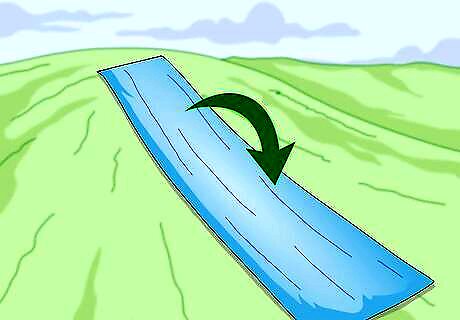
Spread the plastic sheet out on a grassy lawn. It would be best if you place the slide on a hill—even if it is a small one. The slight incline will help boost your speed. Smooth out any wrinkles or ripples with your hands.
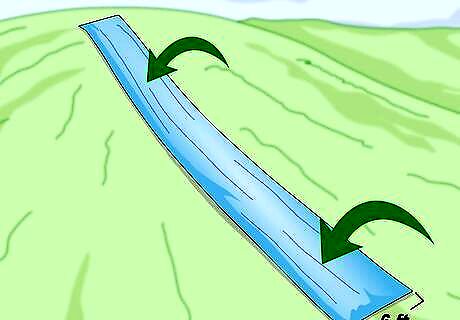
Fold the plastic sheeting in half. It should now be around 5 or 6 feet (1.52 or 1.83 meters) wide. This will help make it even more durable and slide-like.

Anchor the sides of the sheeting with landscape anchor pins. You will need a pin in each corner of the slide. You will also need to add more pins down the long side edges, about 5 to 10 feet (1.52 to 3.05 meters) apart. Use a hammer to drive the pins into the grass. You want them to be flush against the ground. If they are sticking out, you could get hurt when you use the slide.
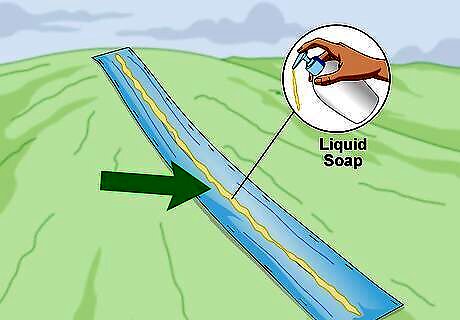
Add some liquid soap down the center of the slide. This will help lubricate it and make it more slippery. You can use dish soap or even baby shampoo!

Spray the slide with water. Grab a hose and turn it on. Spray water over the entire side. Don't worry if the excess water runs off the slide.
Creating a Reinforced Slide

Get a roll of heavy-duty plastic sheeting. Buy a roll of thick, plastic sheeting that is between 6 and 12 feet (1.83 and 3.66 meters) wide and 100 feet (30.48 meters) long. You can cut the plastic down shorter, if you want to, but don't make it narrower. Get thick plastic, around 6-mil. Don't skimp and get the cheap stuff—it will' tear.
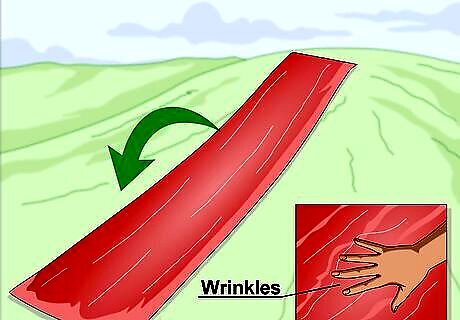
Unroll the plastic sheet on a grassy lawn. It would be better if you unroll the plastic sheeting on a hill, even if it is a short one. The slight incline will help give you more speed on the way down. Smooth out any wrinkles or ripples with your hands.
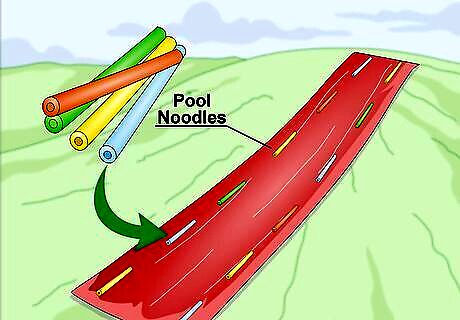
Place pool noodles along the edges of the plastic. They need to be right on top of the plastic, a few inches/centimeters away from the edge. Keep the pool noodles 6 to 10 feet (1.83 to 3.05 meters) apart. You will need noodles along both of the long edges. Pool noodles are long, colorful tubes made from foam. You can find them in many stores during the summer.
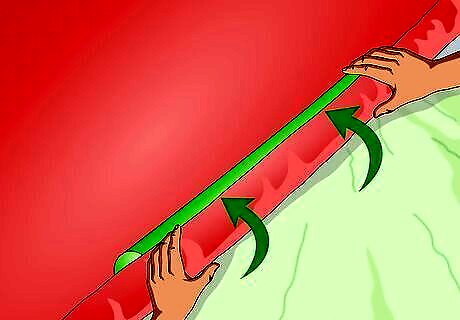
Roll the edge of the plastic around the first pool noodle. Start with a pool noodle at the beginning of your slide. Roll the plastic around the noodle twice. Hold the pool noodle steady or have someone do it for you. If you don't have landscape anchor pins, place the pool noodle 1 foot (30.48centimeters) from the edge of the plastic sheeting.
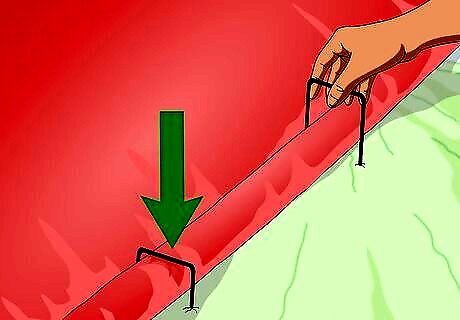
Secure the noodle with landscape anchor pins. Hold the noodle in place, then drive a landscape anchor pin through it. You will need a pin at both ends of the noodle. Be sure to drive the pin straight down through the plastic and the noodle, right into the lawn. For extra security, add one in the middle as well. If you don't have landscape pins, fold the edge of the plastic over the pool noodle, and secure it with duct tape or packaging tape.
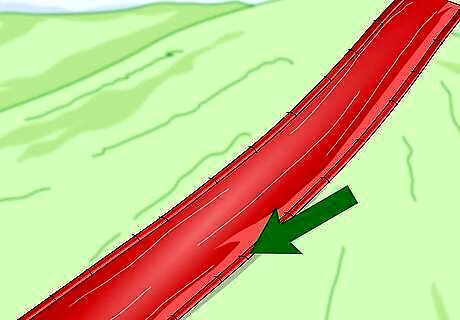
Continue rolling and securing the pool noodles. The noodles will help create a barrier. Not only will they prevent you from going outside the edges of the slide, but they will help keep the water in the slide as well. If you want to, you can add a pool noodle at the end of the slide as well to act as a buffer.
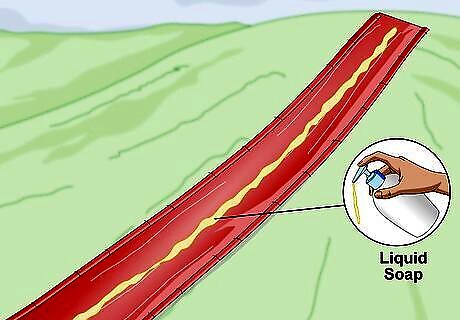
Run liquid soap down the middle of the slide. You can use dish soap, if you like, but baby soap would be even better. Run the soap down the middle of the slide. This will help lubricate the plastic and make it even more slippery.
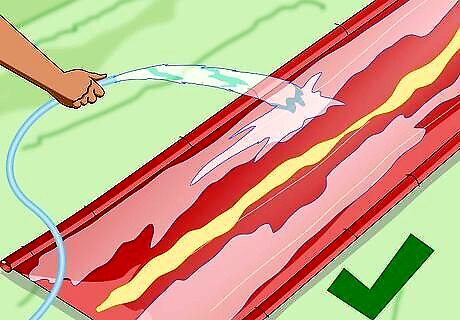
Spray water onto the slide. Grab a hose and turn the water on. Spray the water onto the slide. You need just enough water to make it wet. Do not fill the slide like a mini pool.
Setting Up a Beach Slide

Smooth out the area for your slide. Use a shovel to clear an area that is 10 by 100 feet (3.05 by 30.48 meters). Add an extra 40 feet (12.92 meters) at the beginning for your "runway." Make sure that there are no rocks or shells in this 10 by 140-foot (3.05 by 42.67-meter) strip. For best results, choose something with a slight incline. Walk over the area and pat it down with your hands. This is important. Any sharp shells or rocks can not only cut the plastic but also you.
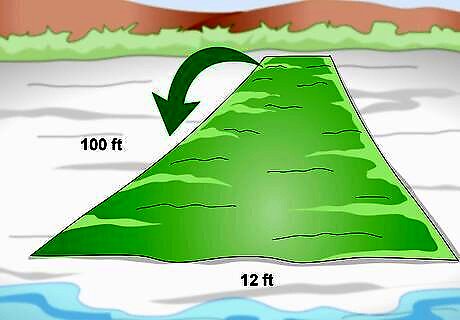
Roll heavy-duty plastic sheeting out along the cleared path. Buy a roll of plastic that is 10 to 12 feet (3.05 to 3.66 meters) wide and 100 feet long (30.48 meters). Make sure that you use thick, heavy-duty plastic, about 6-mil. Don't use the thin kind just because it is cheap; it will rip and tear.
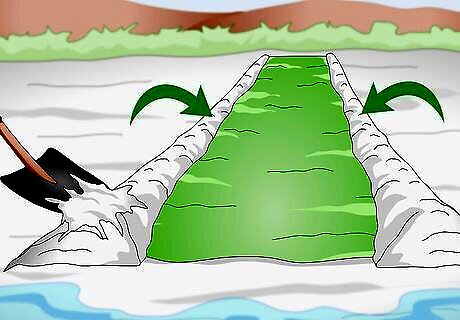
Secure the edges with sand or landscape anchor pins. You can do this by burying them in sand, about 1 to 2 feet (30.48 to 60.96 centimeters) on each side. You can also drive landscaping anchor pins into the edges instead. Use a hammer to drive the pins into the sand so that they don't stick out. Keep them 5 to 10 feet (1.52 to 3.05 meters) apart.
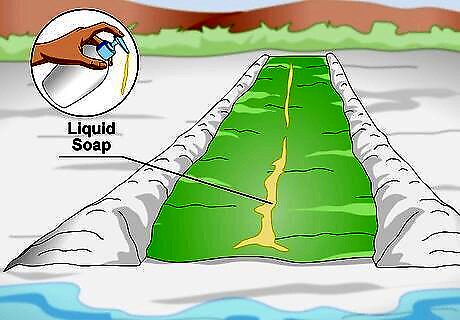
Add some liquid soap down the length of the slide. This will lubricate the plastic and make it even easier to glide along it. Use environmentally-friendly soap, if you can, such as unscented castile soap.
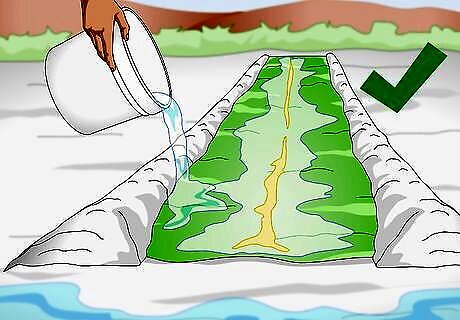
Pour some water onto the slide. If you have access to a hose with fresh water, use that if possible. If you don't, grab some buckets and start gathering water from the sea. Pour enough water onto the plastic to make it wet.




















Comments
0 comment